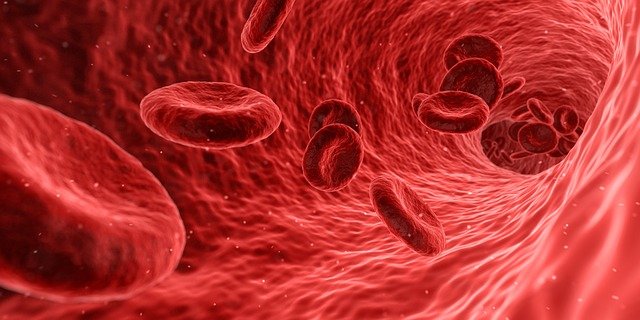 The neutrophils are part of the non-specific immune system, our body's first line of defense against pathogens. Their advantages are their rapid responsiveness, ability to eliminate various threats, and ability to penetrate from blood vessels into infected tissue. They are therefore excellent candidates for use as micro robot. However, most previous strategies for targeting them rely on their natural mode of action, which often lacks speed and precision.
The neutrophils are part of the non-specific immune system, our body's first line of defense against pathogens. Their advantages are their rapid responsiveness, ability to eliminate various threats, and ability to penetrate from blood vessels into infected tissue. They are therefore excellent candidates for use as micro robot. However, most previous strategies for targeting them rely on their natural mode of action, which often lacks speed and precision.
Chinese researchers at Jinan University have set out to change this. They reported on the deployment in ACS Central Science optical tweezers for manipulating neutrophils in a living organism. The scientists decided when the neutrophils Granulocytes be activated and what route they would take to their destination. This allowed them to get drugs exactly where they wanted them and cleanse the body without having to alter the neutrophils themselves. In this way, they used the neutrophils naturally present in the body as micro robotthat they could control.
The Chinese are not the first to try micro robot use for medical purposes. However, with most current techniques micro robot generated outside the body and introduced into the body. However, this comes with a number of problems, from causing inflammation to removing the micro robot through the body before they can serve their purpose.
Image source: Pixabay; Which
Read more
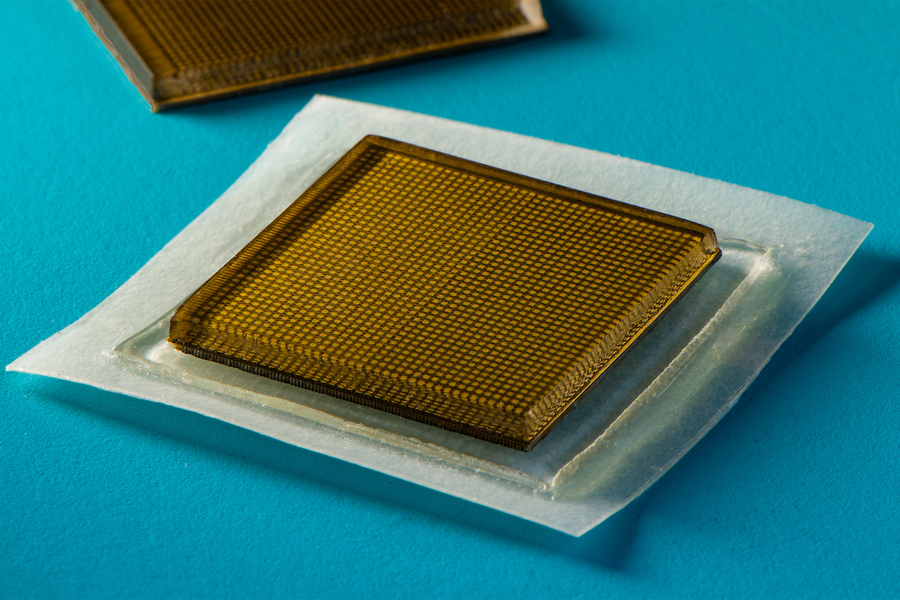 The Ultrasound examination (USG) is a safe, non-invasive method that allows a physician to obtain valuable information about a patient's internal organs. However, it currently requires the use of large, bulky and expensive equipment that is only available in doctor's offices. Engineers at MIT have created a miniature ultrasound systemdeveloped that can be stuck to the skin like a band-aid and for 48 hours provides images.
The Ultrasound examination (USG) is a safe, non-invasive method that allows a physician to obtain valuable information about a patient's internal organs. However, it currently requires the use of large, bulky and expensive equipment that is only available in doctor's offices. Engineers at MIT have created a miniature ultrasound systemdeveloped that can be stuck to the skin like a band-aid and for 48 hours provides images.
Tests on volunteers have shown that the device adheres well to the skin and provides good quality images of large blood vessels and deeper organs. In addition, it was possible to change the organs recorded during various activities when subjects were sitting, standing, walking, or cycling.
At this stage, the prototype needs a wired connection to a device that converts the reflected waves into images. However, as the developers assure us, it could be useful even now. For example, it could be used in a hospital to continuously monitor a patient without a doctor having to perform the examination.
Image source: MIT ; Which
Read more
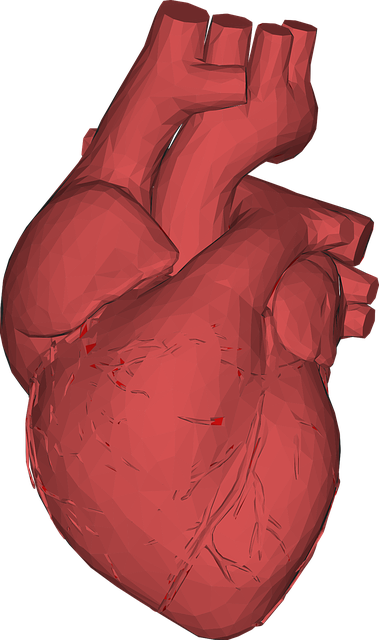 The Heart is unable to regenerate after damage. Therefore, the efforts of tissue engineering specialists trying to develop techniques for the regeneration of the cardiac muscle to develop and in the future to create a whole heart from scratch is of great importance for cardiology and cardiac surgery. This is a difficult task, however, as unique structures must be modeled, most notably the spiral arrangement of the cells. It has long been suspected that this type of cell organization is necessary to pump sufficiently large volumes of blood.
The Heart is unable to regenerate after damage. Therefore, the efforts of tissue engineering specialists trying to develop techniques for the regeneration of the cardiac muscle to develop and in the future to create a whole heart from scratch is of great importance for cardiology and cardiac surgery. This is a difficult task, however, as unique structures must be modeled, most notably the spiral arrangement of the cells. It has long been suspected that this type of cell organization is necessary to pump sufficiently large volumes of blood.
Bioengineers from the Harvard John A. Paulson School of Engineering and Applied Sciences have succeeded in creating the first biohybrid model of a human heart chamber spirally arranged cardiac cells to create and thereby prove that the assumption was correct. This spiral arrangement of the cells significantly increases the amount of blood that is pumped with each heartbeat. This is an important step that brings us closer to the goal of building a transplantable heart from scratch," says Professor Kit Parker, one of the lead authors of the study. We can read the results on the pages of Science ...
Image source: Pixabay; Which
Read more
 blood cells form differently than previously thought, researchers at Boston Children's Hospital report in Nature. In studies on mice, they have shown that such cells are not made of one, but of two kinds of progenitor cells are formed. This in turn can be of enormous importance for the treatment of Blood cancer, for bone marrow transplants and for the development of immunology.
blood cells form differently than previously thought, researchers at Boston Children's Hospital report in Nature. In studies on mice, they have shown that such cells are not made of one, but of two kinds of progenitor cells are formed. This in turn can be of enormous importance for the treatment of Blood cancer, for bone marrow transplants and for the development of immunology.
So far it has been assumed that most of our blood originates from a small number of cells that become blood stem cells, also known as hematopoietic stem cells. To our astonishment, we discovered that there is a second group of progenitor cells that are not derived from stem cells. It is they who make up most of the blood in our body from fetus to early adulthood, after which their contribution to blood formation decreases," says senior physician Fernando Camargo.
The newly discovered cells are embryonic multipotent progenitor cells. The researchers are now examining whether their discovery, which they made in mice, can also be applied to humans. If this is the case, it could help develop methods of boosting the immune system in older people, new insights into blood cancers, especially in children, gain or improved methods for bone marrow transplant to allow.
Image source: Pixabay; Which
Read more
 When scientists began in the early 20th century, the Brain activity using electrodes, they noticed signals they called "brain waves." Since then they have been the subject of intensive research. We know that waves are a manifestation of synchronized neuronal activity and that changes in wave intensity indicate decreasing or increasing activity of groups of Neurons represent. The question is whether and how these waves are involved in the transmission of information.
When scientists began in the early 20th century, the Brain activity using electrodes, they noticed signals they called "brain waves." Since then they have been the subject of intensive research. We know that waves are a manifestation of synchronized neuronal activity and that changes in wave intensity indicate decreasing or increasing activity of groups of Neurons represent. The question is whether and how these waves are involved in the transmission of information.
That question was answered by Tal Dalal, a PhD student at Bar-Ilan University's Multidisciplinary Brain Research Center. From a paper published in Cell Reports, researchers found that the degree of synchronization of brainwaves in the field of information transmission have changed. They then examined how this affected the transmission of the information and how it was understood by the area of the brain that it reached.
Image source: Pixabay; Which
Read more
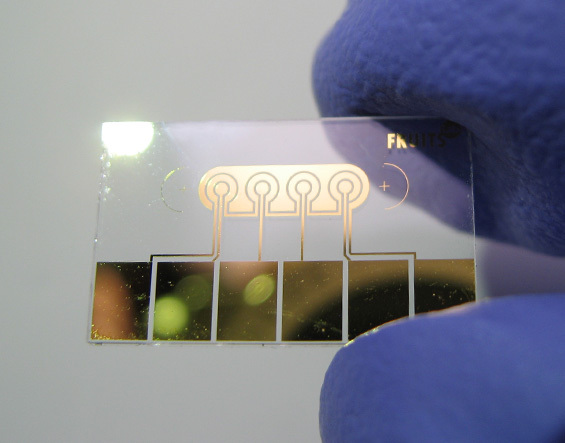 A group of researchers led by Ms. Cho Yoon-kyoung from the Institute of Basic Research (IBS) in Korea has one biosensor developed by analyzing a drop of blood Cancer can recognize. The chip consists of nanoporous gold electrodes. The researchers named the development process SEEDING, which is an English acronym for the technique - "surfactant electrochemical etching and deposition process for the growth of nanostructures and nanopores".
A group of researchers led by Ms. Cho Yoon-kyoung from the Institute of Basic Research (IBS) in Korea has one biosensor developed by analyzing a drop of blood Cancer can recognize. The chip consists of nanoporous gold electrodes. The researchers named the development process SEEDING, which is an English acronym for the technique - "surfactant electrochemical etching and deposition process for the growth of nanostructures and nanopores".
Tests of the new biosensor have confirmed that it enables rapid detection of prostate cancer in patients by analyzing blood and urine samples. This is made possible by detecting a specific type of protein associated with cancer-causing exosomes. The method is much faster and more convenient than previously known methods of sample analysis, which require separation and dilution of biomarkers, which is usually done in large medical facilities or laboratories.
Image source: The Korea Herald
Read more
 A non-invasive ultrasound-based procedure developed and tested at the University of Michigan destroys a large proportion of the rat's Tumor cells of liver cancer and aids in reducing lesions in the body Immune system in combating the further spread of the disease.
A non-invasive ultrasound-based procedure developed and tested at the University of Michigan destroys a large proportion of the rat's Tumor cells of liver cancer and aids in reducing lesions in the body Immune system in combating the further spread of the disease.
According to the researchers, destroying 50 to 75 percent of the tumor's volume meant that the rats' immune systems were able to remove the rest on its own without showing signs of recurrence or metastasis in more than 80 percent of the test animals. According to the scientists who conducted the experiments, their new method stimulates the immune system to continue fighting cancer.
Image source: Innovationtoronto.com
Read more
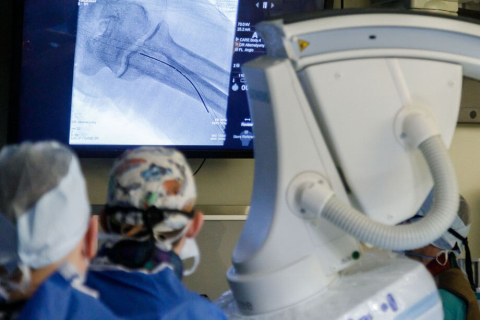 A team of doctors from the University Hospital of the Medical University of Warsaw (UCK WUM) performed an innovative procedure to create an arteriovenous fistula using an endovascular method. As pointed out in the university's announcement, this is the first such solution to be applied in Central and Eastern Europe. On April 12, the fistula was used to hemodialysis to be performed on the patient. The patient feels good.
A team of doctors from the University Hospital of the Medical University of Warsaw (UCK WUM) performed an innovative procedure to create an arteriovenous fistula using an endovascular method. As pointed out in the university's announcement, this is the first such solution to be applied in Central and Eastern Europe. On April 12, the fistula was used to hemodialysis to be performed on the patient. The patient feels good.
The procedure was performed 2 months ago (February 15). The team consisted of radiologists, surgeons, anesthesiologists and nephrologists. The WUM specialists were supported by a world-renowned specialist in vascular and endovascular surgery, dr Tobias Steinke from the Schoen Clinic in Düsseldorf.
Image source: University Hospital of the Medical University of Warsaw
Read more
 Pacemaker have been saving people's lives for decades. However, these are large devices that are complicated and risky to implant. The solution of the future could lie in a device developed and tested at Yonsei University in Seoul. There, an ultra-thin device was developed that monitors the heart and, if necessary, electrical Signal gives. It has a special coating that makes it stick to a moist organ, like the heart.
Pacemaker have been saving people's lives for decades. However, these are large devices that are complicated and risky to implant. The solution of the future could lie in a device developed and tested at Yonsei University in Seoul. There, an ultra-thin device was developed that monitors the heart and, if necessary, electrical Signal gives. It has a special coating that makes it stick to a moist organ, like the heart. The neutrophils are part of the non-specific immune system, our body's first line of defense against pathogens. Their advantages are their rapid responsiveness, ability to eliminate various threats, and ability to penetrate from blood vessels into infected tissue. They are therefore excellent candidates for use as
The neutrophils are part of the non-specific immune system, our body's first line of defense against pathogens. Their advantages are their rapid responsiveness, ability to eliminate various threats, and ability to penetrate from blood vessels into infected tissue. They are therefore excellent candidates for use as  The Ultrasound examination (USG) is a safe, non-invasive method that allows a physician to obtain valuable information about a patient's internal organs. However, it currently requires the use of large, bulky and expensive equipment that is only available in doctor's offices. Engineers at MIT have created a miniature
The Ultrasound examination (USG) is a safe, non-invasive method that allows a physician to obtain valuable information about a patient's internal organs. However, it currently requires the use of large, bulky and expensive equipment that is only available in doctor's offices. Engineers at MIT have created a miniature  The
The  When scientists began in the early 20th century, the Brain activity using electrodes, they noticed signals they called "brain waves." Since then they have been the subject of intensive research. We know that waves are a manifestation of synchronized neuronal activity and that changes in wave intensity indicate decreasing or increasing activity of groups of Neurons represent. The question is whether and how these waves are involved in the transmission of information.
When scientists began in the early 20th century, the Brain activity using electrodes, they noticed signals they called "brain waves." Since then they have been the subject of intensive research. We know that waves are a manifestation of synchronized neuronal activity and that changes in wave intensity indicate decreasing or increasing activity of groups of Neurons represent. The question is whether and how these waves are involved in the transmission of information. A group of researchers led by Ms. Cho Yoon-kyoung from the Institute of Basic Research (IBS) in Korea has one biosensor developed by analyzing a drop of blood Cancer can recognize. The chip consists of nanoporous gold electrodes. The researchers named the development process SEEDING, which is an English acronym for the technique - "surfactant electrochemical etching and deposition process for the growth of nanostructures and nanopores".
A group of researchers led by Ms. Cho Yoon-kyoung from the Institute of Basic Research (IBS) in Korea has one biosensor developed by analyzing a drop of blood Cancer can recognize. The chip consists of nanoporous gold electrodes. The researchers named the development process SEEDING, which is an English acronym for the technique - "surfactant electrochemical etching and deposition process for the growth of nanostructures and nanopores".  A non-invasive ultrasound-based procedure developed and tested at the University of Michigan destroys a large proportion of the rat's Tumor cells of liver cancer and aids in reducing lesions in the body Immune system in combating the further spread of the disease.
A non-invasive ultrasound-based procedure developed and tested at the University of Michigan destroys a large proportion of the rat's Tumor cells of liver cancer and aids in reducing lesions in the body Immune system in combating the further spread of the disease.  A team of doctors from the University Hospital of the Medical University of Warsaw (UCK WUM) performed an innovative procedure to create an arteriovenous fistula using an endovascular method. As pointed out in the university's announcement, this is the first such solution to be applied in Central and Eastern Europe. On April 12, the fistula was used to hemodialysis to be performed on the patient. The patient feels good.
A team of doctors from the University Hospital of the Medical University of Warsaw (UCK WUM) performed an innovative procedure to create an arteriovenous fistula using an endovascular method. As pointed out in the university's announcement, this is the first such solution to be applied in Central and Eastern Europe. On April 12, the fistula was used to hemodialysis to be performed on the patient. The patient feels good.